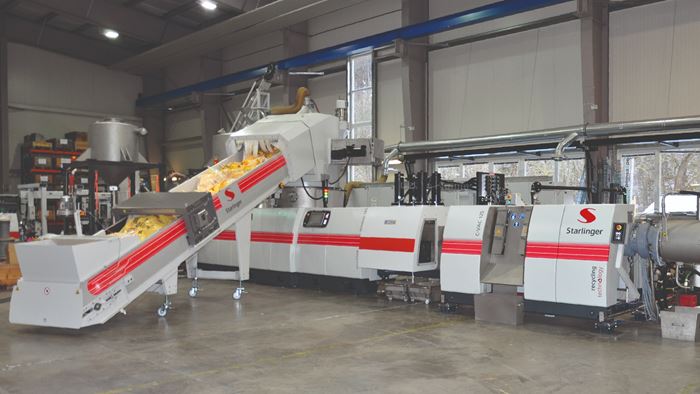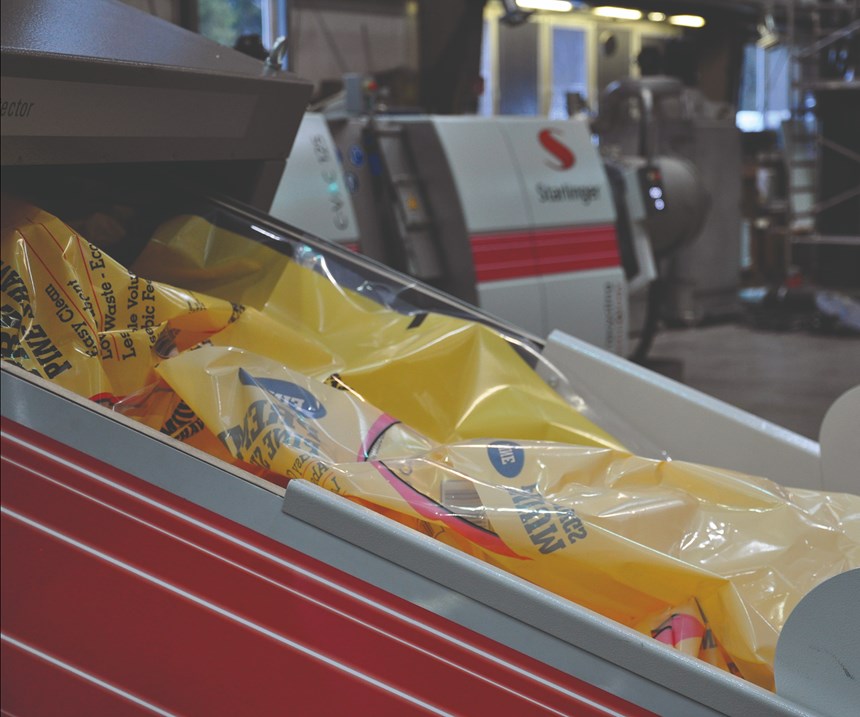Starlinger Offers Greater Efficiency For Film Recyclers With The recoSTAR Dynamic 145
The introduction of this line was prompted by inquiries from film recyclers; the first three machines are currently being installed.
In early 2018, Starlinger (Vienna, Austria) introduced the recoSTAR dynamic 145, which is specially designed for a capacity range of ~1,000 kg/h. The first three lines are currently being installed, and the company has already received orders for additional machines of this type.
Last year, Starlinger recycling technology supplemented its recycling line recoSTAR dynamic with a seventh machinery size. The introduction of this new size was as result of numerous inquiries from those involved with post-consumer film (e.g., packaging film, agricultural film), which predominantly requested a throughput of about 1,000 kg/h. The recoSTAR dynamic 125 and 165, were slightly under- or oversized for this capacity.
The launch of the recoSTAR dynamic 145 bridges this gap: The line is designed for about one ton of regranulate and the company states that it shows an optimal cost-benefit ratio.
Starlinger says that this new size can handle a variety of applications from industrial or post- consumer waste, humid or heavily printed material – the line is extremely versatile and permits a customized setup. A central component is the SMART feeder, which on top of drying and condensing the material enables a homogeneous mixing ratio. Recyclers of post-consumer and/or heavily printed film also operate the degassing unit C-VAC; this module is positioned after the filter and can be controlled independently of the main extruder. In the C-VAC, the melt surface is increased by 300%, which allows the efficient removal of gases and prevents air from being trapped inside the regranulate. This is especially important for film recyclers because ink, humidity and contamination can lead to higher formation of gases during the extrusion process, the company stated. Another benefit is the rECO package of the recoSTAR dynamic, which features a 10% reduction in energy consumption.
Shortly after its introduction, Starlinger recycling technology logged its first orders. At the beginning of 2019, the first three lines are being installed and will process different kinds of film (LDPE / LLDPE / HDPE, agricultural film or production waste). All lines are equipped with the C-VAC module and will recycle material with 4-10% surface moisture. Due to its excellent quality, the regranulate will predominantly be used for the production of new films, according to the company.
Related Content
-
Breaking News From NPE2024
Here is a firsthand report of news in injection molding, extrusion, blow molding and recycling not previously covered.
-
Scaling Up Sustainable Solutions for Fiber Reinforced Composite Materials
Oak Ridge National Laboratory's Sustainable Manufacturing Technologies Group helps industrial partners tackle the sustainability challenges presented by fiber-reinforced composite materials.
-
Evolving Opportunities for Ambitious Plastics Recycler
St. Joseph Plastics grew from a simple grinding operation and now pursues growing markets in recycled PP, food-grade recycled materials, and customized post-industrial and post-consumer compounds.










